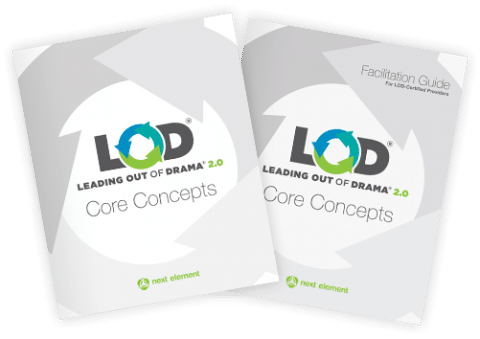Four Counterproductive Myths About Conflict
Share viaThis article was originally published in Fast Company
Conflict has a bad rap. Just think of the word. Ask people the first things that come mind when they hear it, and they’ll often say things like, “run away,” “somebody gets hurt,” “I hate it,” “fighting,” or “war.” Most peoples’ negative associations with conflict come from personal experience. Mine do, too. I grew up the son of Mennonite missionary parents. Mennonites are a Protestant denomination known for nonviolent conflict resolution. The early messages I heard growing up were, “Turn the other cheek” or “Find a way to solve your problem without resorting to violence.” My parents dedicated their lives to building more peaceful and uplifting relationships with others.
Conflict can be destructive, but it by no means has to be.
So maybe I was fated to pursue a PhD in clinical psychology, a certification as a conflict mediator, and advanced training in communication methods to reduce conflict. I grew up in Botswana, which borders South Africa, during the latter’s apartheid period, and later I worked in addiction treatment and marital counseling. For the past 12 years, I’ve drawn on that experience to help leaders rethink their attitudes toward conflict, which are often based around these four persistent misconceptions.
MYTH NO. 1: PEACE IS THE ABSENCE OF CONFLICT
Don’t confuse peace with tranquility. Don’t confuse lack of shouting with the absence of conflict. I’ve known many families, churches, and other organizations that claim to be peaceful just because they don’t raise their voices and “agree to disagree.” Yet there’s still a staggering amount of violence in these communities. Passive-aggressive gossip, manipulation, avoidance, withholding information, and power plays still rule the day.
Peace is an active, dynamic, and generative process that demands healthy conflict. If peace means we’re getting along, cooperating, and not hurting each other, then we can’t get there without addressing our differences and disagreements first. Diversity is a basic fact of human society—it always has been, from the very beginning. Embracing and working with it is the only way toward peace, and this involves a certain degree of conflict.
MYTH NO. 2: CONFLICT IS DESTRUCTIVE
Conflict can be destructive, but it by no means has to be. Mythologist, poet, and psychologist Michael J. Meade believes that the purpose of conflict is to create. If we define conflict simply as a gap between what we want and what we are experiencing, then the real question becomes, “How are we going to close the gap?”
Conflict creates energy that can be either constructive or destructive—either it helps close that gap or opens it wider. Ford Motor Company used the energy of conflict amid the 2008 financial crisis to reinvent itself without taking bailout funds (though it did benefit from federal aid in other ways). For Wells Fargo, some of the energy caused by the gap between what the bank was earning and what shareholders wanted may have led to the latest scandal, with the company illegally signing up thousands of customers for services they didn’t ask for.
MYTH NO. 3: CONFLICT NEEDS TO BE MINIMIZED, MANAGED, AND CONTROLLED
Have you ever wanted something that you didn’t have? You probably felt a real energy behind that discomfort, right? That’s one way your mind motivates you to pursue goals. Have you ever solved a big problem or achieved a significant goal, and then felt a little let down afterward? It’s because the energy of conflict was gone. The solution at that point is to set a new goal—create another gap, generate more conflict, and use it to achieve something new.
Try and remove the conflict itself and your are likely to reduce your creative potential.
The problem with conflict reduction, mediation, and management philosophies is that they make conflict out to be the culprit. It isn’t. Conflict is the source of energy. The real problem is the casualties caused by misusing that energy—by failing to channel it into something productive. But try and remove the conflict itself and you’re likely to reduce your creative potential.
MYTH NO. 4: COMPASSION IS AN ANTIDOTE TO CONFLICT
Many people believe compassion is all about empathy, sympathy, caring, support, and doing good for others. But the Latin root of the word means “to struggle (or even suffer) with.” So sure, compassion definitely includes a heartfelt care for others, but that caring is translated into co-suffering. “Compassion” really means to get in the trenches with someone, suffering together, and sharing the difficult task of creating something amazing through conflict—not by resolving it. Compassion doesn’t mean doing that work for somebody, rescuing them, or avoiding accountability.
Instead, compassion can be used to create mutual accountability with dignity and respect. In other words, being truly compassionate means caring enough to engage in creative conflict with someone. That’s a powerful opportunity—why try to avoid it?
Join our community to receive weekly articles and tips.
 Tackle conflict myths in your life. Explore Next Element’s Leading Out of Drama framework for compassionate accountability. Start small with an online assessment, attend a seminar, or get certified to share it with others.
Tackle conflict myths in your life. Explore Next Element’s Leading Out of Drama framework for compassionate accountability. Start small with an online assessment, attend a seminar, or get certified to share it with others.
![]() Subscribe to Dr. Regier’s free podcast
Subscribe to Dr. Regier’s free podcast
Book Your Next Keynote Speaker

Author and Co-founder of Next Element, Dr. Nate Regier is available to speak at your upcoming event.
Submit a Speaker RequestPodcast: Listen to Nate "On Compassion"
 Listen to the Podcast
Listen to the Podcast



0 Comments
Add comment